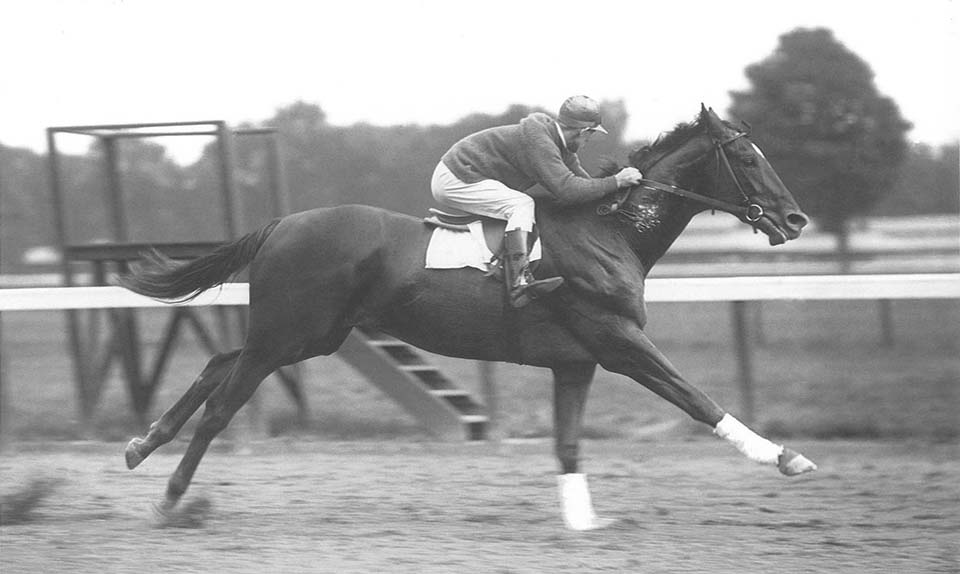Preakness Stakes 2021: Contenders, Lineup and Odds
Last year, for the first time in 11 years, the filly in Swiss Skydiver faced off against the boys and won the 145th Preakness and became the first female to win the race since Rachel Alexandra in 2009. Rachel Alexandra (2009) was the first filly since Nellie Morse in 1924 to win the Preakness.
Fifty five fillies have competed in the Preakness with six winners. In addition to Swiss Skydiver, Rachel Alexandra and Nellie Morse, the others are Flocarline (1903), Whimsical (1906) and Rhine Maiden (1915). No fillies will head to the gate this year, however, nor will any trainers or jockeys of Preakness contenders be female
Kentucky Derby winners Genuine Risk (1980) and Winning Colors (1988) finished second and third, respectively, in the Preakness Stakes as the betting favorites.
Women in the Preakness Stakes
Jockeys:
Patricia Cooksey 1985, Tajawa (6th)
Andrea Seefeldt 1994, Looming (7th)
Rosie Napravnik 2013, Mylute (3rd)
2014, Bayern (9th)
Trainers:
Judy Johnson 1968, Sir Beau (7th)
Judith Zouck 1980, Samoyed (6th)
Nancy Heil 1 1990, Fighting Notion (5th)
Shelly Riley 1992, Casual Lies (3rd)
Dean Gaudet 1992, Speakerphone (14th)
Penny Lewis 1993, Hegar (9th)
Cynthia Reese 1996, In Contention (6th)
Jean Rofe 1998, Silver’s Prospect (10th)
Jennifer Pederson 2001, Griffinite (5th)
2003, New York Hero (6th)
2004, Song of the Sword (9th)
Nancy Alberts 2002, Magic Weisner (2nd)
Lisa Lewis 2003, Kissin Saint (10th)
Kristin Mulhall 2004, Imperialism (5th)
Linda Albert 2004, Water Cannon (10th)
Kathy Ritvo 2011, Mucho Macho Man (6th)
Linda Rice 2014, Kid Cruz (8th)
Kelley Rubley 2019, Alwaysmining (11th)
Related:Betting The Preakness: Keepmeinmind Odds, Profile, Entries
Throughout history, seven African American riders have had Preakness mounts, including two who have made the winner’s circle.
George “Spider” Anderson won the 1889 Preakness aboard Buddhist. Willie Simms rode two Preakness runners and won aboard Sly Fox in 1998. “Pike” Barnes finished second aboard Philosophy in 1890, while the third- and fourth-place finishers in the 1896 Preakness were ridden by African Americans – Alonzo Clayto (3rd with Intermission) and Tony Hamilton (4th on Cassette). The final two African American jockeys to ride in the Preakness so far were Wayne Barnett (Sparrowvon, 8th in 1985) and Kevin Krigger (Goldencents, 5th in 2013).
No African American riders will be in the Preakness Stakes this year.
Preakness Stakes 2021:Lineup
Also in the entire 145-year history of the Preakness Stakes, only two people have both ridden and also saddled Preakness winners. Louis J. Schaefer won the 1929 Preakness aboard Dr. Freeland and in 1939 saddled Challedon to victory. Hall of Fame jockey John Longden duplicated the feat when he rode 1943 Preakness winner and sixth Triple Crown hero Count Fleet to victory and then as a trainer saddled Kentucky Derby winner Majestic Prince to the Preakness win in 1969.
The Preakness is unique among the three races in that it requires three specific things — a painter, access to a rainbow of paint colors and a hydraulic lift ready for a soon as the race’s winner crosses the finish line.
Each year, the silks belonging to the winner of the Preakness Stakes are painted on the jockey located on top of a weathervane sitting above a replica of the track’s Old Clubhouse cupola. The painter also includes the numbers on the horse’s saddlecloth. The paint job remains for a calendar year until the next year’s Preakness, except for this year as the race was delayed six months thanks to the Covid-19 pandemic.
The painting of the weathervane tradition practice began at Pimlico in 1909 at Pimlico on the the old Members’ Clubhouse. The Victorian building was destroyed by fire in June of 1966, but a replica of the old building’s cupola was built to stand in the Preakness winners’ circle in the infield.
The original building had an arrow-shaped weather vane, but in 1909 it was struck down by lightning and the Maryland Jockey Club commissioned an ornamental ironworker to forge a new weathervane in the form of a horse and rider. The first silks to adorn the new weathervane was 1909 winner Effendi and his jockey, Willie Doyle. In 1918, when the Preakness was run in two divisions the winning colors were changed between Jack Hare Jr. and War Cloud after the first six months. When the old Members’ Clubhouse burned down the only thing saved from the ruins was the iron weathervane and it is currently on display at Pimlico’s museum exhibit, “Hoofbeats Through History.”
Lawrence Jones, who lives in the Pimlico neighborhood, is the name of the man who currently holds the job as the weathervane painter. In 2000, Jones was joined by a special partner to carry out the tradition following Preakness 125 as renowned artist LeRoy Neiman applied the winning colors along with Jones following the classic race.
Miriam Lee has always been a horse racing fan thanks to trips to the tracks in her home state of Maryland with her father as kid. She owns an OTTB and is an advocate for promoting the sport among her peers. Miriam studies communication arts at Hood College and will receive her master’s degree in 2021, which she plans to use for a career in screenwriting. Her all-time favorite racehorse is Man O War.



